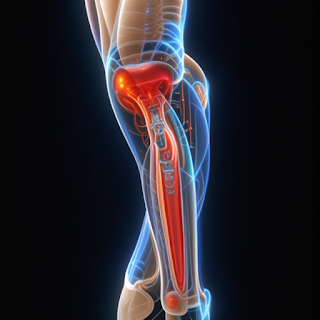Understanding Basal Joint Arthritis: Causes, Symptoms, and Treatment
Introduction: Basal joint arthritis, also known as thumb arthritis, is a common condition that affects the joint at the base of the thumb. This condition can cause pain, stiffness, and difficulty in performing everyday tasks that involve thumb movement. In this article, we will delve into the causes, symptoms, and treatment options for basal joint arthritis to help individuals gain a comprehensive understanding of this condition.
Causes of Basal Joint Arthritis: Basal joint arthritis typically develops over time due to wear and tear on the cartilage that cushions the joint. Some common causes include:
a. Aging: As individuals age, the cartilage in the basal joint can deteriorate, causing arthritis to develop.
b. Joint Overuse: Repetitive thumb movements, such as gripping and pinching, can lead to joint overuse and increase the risk of developing arthritis.
c. Genetics: Certain genetic factors can predispose individuals to develop basal joint arthritis.
d. Injury or Trauma: A previous injury or trauma to the thumb joint can increase the likelihood of developing arthritis later in life.
Symptoms of Basal Joint Arthritis: Recognizing the symptoms of basal joint arthritis is crucial for early diagnosis and treatment. Common symptoms include:
a. Pain: The most prominent symptom of basal joint arthritis is pain at the base of the thumb, which can be aggravated by activities involving thumb movement.
b. Swelling: The joint may become swollen and tender to the touch.
c. Stiffness: Individuals may experience stiffness in the thumb joint, making it difficult to grip objects or perform tasks that require thumb movement.
d. Weakness: Basal joint arthritis can weaken the grip strength of the affected hand.
e. Decreased Range of Motion: The ability to move the thumb fully may be limited due to the arthritis.
Treatment Options for Basal Joint Arthritis: While there is no cure for basal joint arthritis, various treatment options can help manage the symptoms and improve functionality. These include:
a. Medications: Nonsteroidal anti-inflammatory drugs (NSAIDs) can help reduce pain and inflammation associated with basal joint arthritis. In some cases, corticosteroid injections may be recommended to provide short-term relief.
b. Splinting and Bracing: Wearing a splint or brace can help support the thumb joint, alleviate pain, and promote healing.
c. Physical Therapy: A physical therapist can guide individuals through exercises and techniques to improve range of motion, strengthen the thumb, and reduce pain.
d. Lifestyle Modifications: Modifying daily activities and using ergonomic tools can ease stress on the thumb joint and reduce symptoms.
e. Assistive Devices: Using assistive devices, such as specially designed utensils or tools with larger grips, can help individuals with basal joint arthritis perform tasks more comfortably.
f. Surgical Intervention: In severe cases where conservative treatments fail to provide relief, surgical options, such as joint fusion or joint reconstruction, may be considered.
Conclusion: Basal joint arthritis is a common condition that affects the joint at the base of the thumb, causing pain, stiffness, and reduced thumb function. Understanding the causes, symptoms, and treatment options for basal joint arthritis is essential for individuals to manage the condition effectively and improve their quality of life. By consulting with healthcare professionals, implementing appropriate treatment strategies, and making lifestyle modifications, individuals with basal joint arthritis can find relief from pain and regain better thumb functionality.



Comments
Post a Comment